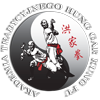The characteristic of the Hung Gar Kuen
Hung Gar Kuen is a system derived from the southern Shaolin Monastery, belongs to the five major southern systems. The others are Liu Gar (Lau Gar), Li Gar (Lei Gar), Mo Gar (Mok Gar), Choi Gar (Choy Gar). It is one of the few systems that has survived to this day in an almost unchanged form. Of course it has evolved like any system, but it has evolved by enriching the system, not by replacing some techniques with others, as is the case with some systems. The basis of the system are the techniques of the five animals, five elements and the Chi Kung exercise system.
Performing techniques based on animal movements does not consist in placing the hands in a specific way, but the way of using force and the way of moving, which is characteristic of each technique, is important.
TIGER
When performing tiger techniques, a person should concentrate his efforts primarily on destroying the opponent, not only hard blocks are used for defense, but also curtains made at the front entrances. These techniques are usually performed against fast and small opponents. These techniques are characteristic of the "long hand" forms. Another feature that we can notice is the way you move when performing the tiger techniques, attack and defense are in the same line. The most famous tiger technique that Hung Gar is famous for is fu jow (tiger claws), so many versions of which only exist in this system.
CRANE
Crane attacks are performed in an arc, bypassing the opponent's defense, are associated with the "short zone" forms, side slides use the force of body rotation to increase the effectiveness and strength of the blow, they are characteristic of the "long zone". The crane's techniques place great emphasis on defense and counterattacking the opponent's vital points. The use of wrist force for locking is characteristic. The other movements symbolize flexibility and docility.
DRAGON
The techniques of the dragon are mainly rotating and circular movements, modeled on the movements of the mythical dragon's tail. Characteristic of the dragon techniques are constant changes in the direction of attack and descent, and the lack of visible aggression - he never attacks first, which is a sign of calmness. It is a symbol of spirituality and longevity, it is identified with the inner strength of Chi. The characteristics of the dragon are embodied in each technique through the use of Chi, regardless of what techniques it is considered to be.
SNAKE
The snake technique is characterized by a method of deriving the technique which makes it impossible to predict its final form. The fingers symbolize the tongue, the hand - the head, and the body - the snake's arm, attacks are made in arcs with a constant change of directions at high speed. The person using the snake techniques uses the speed of movements against the overwhelming physical strength of the opponent.
LEOPARD
The leopard techniques are simple attacks and small arcs with the use of various hand configurations, moving in soft positions. The strength and effectiveness of these techniques largely depend on speed and determination.
Summing up, it can be stated that by practicing the tiger techniques we influence the development of physical strength and body muscles. Crane techniques increase joint mobility and tendon flexibility. Dragon techniques strengthen the mind and spirit of the practitioner - the result is a strong motivation in life to do right, righteous behavior. Snake techniques improve health and vitality - by stimulating the flow of Chi in the body. Leopard techniques improve speed and coordination.

